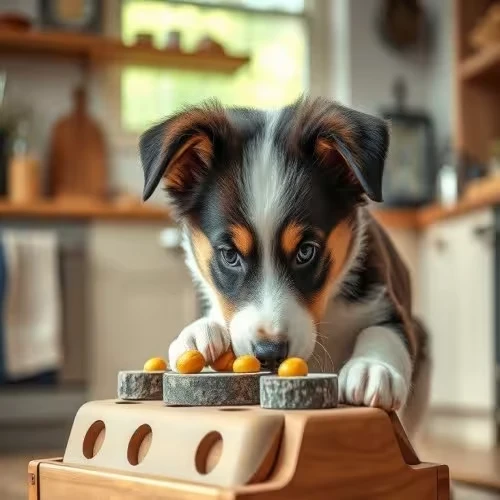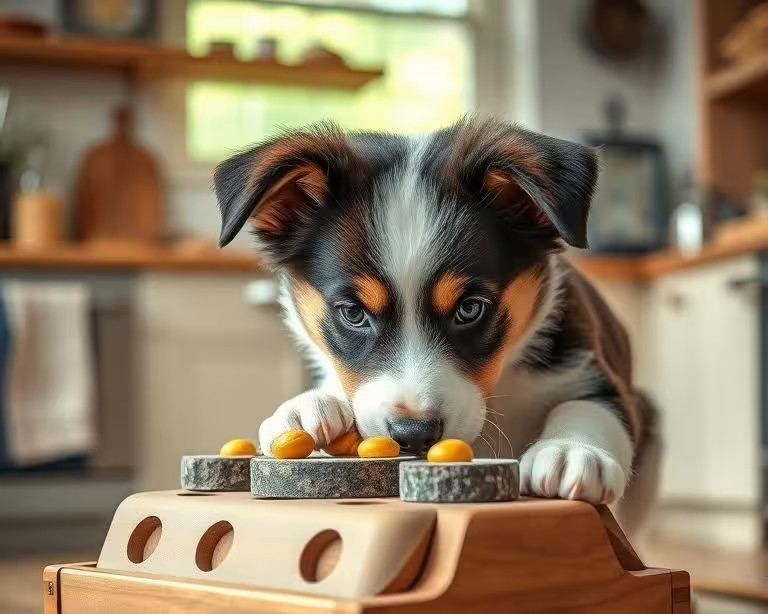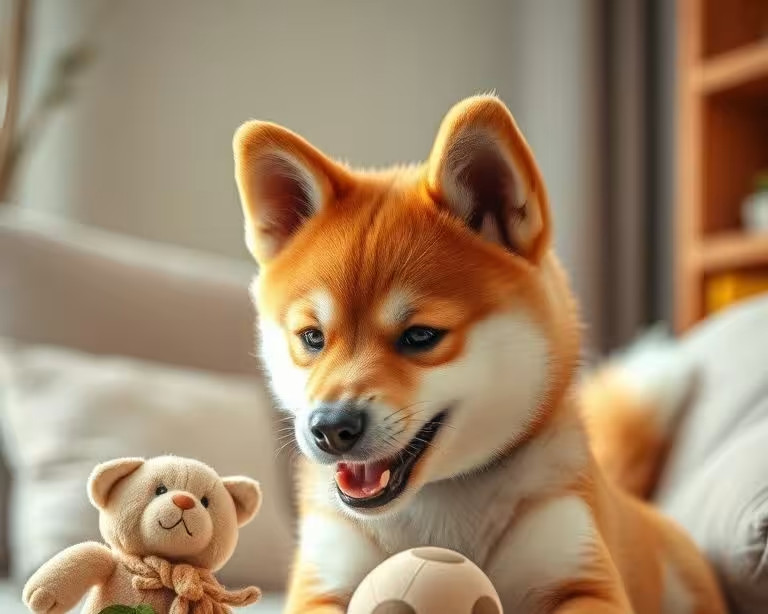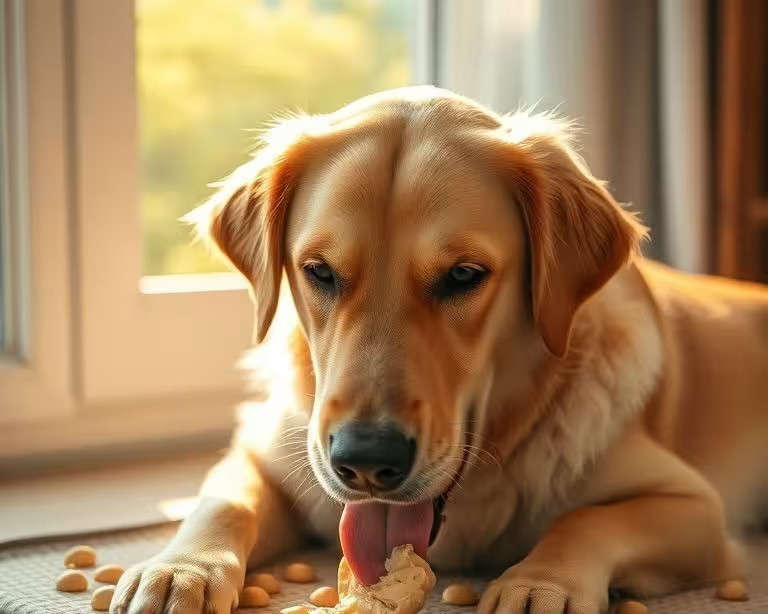Unleash Their Genius: The Ultimate Guide to Dog Puzzle Toys for Mental Stimulation & Stress Relief

Are you looking for ways to keep your furry friend engaged, happy, and mentally stimulated? The answer might lie in the world of dog puzzle toys. These aren't just fun distractions; they're crucial tools for enhancing your dog's cognitive well-being and providing much-needed mental exercise. From interactive dog toys that challenge their problem-solving skills to dog treat dispensing puzzles that offer rewarding treats, this comprehensive guide will explore the benefits and best choices for your canine companion. We'll also delve into how dog licking toys can serve as a fantastic stress reliever, ensuring your pet leads a well-rounded and fulfilling life.
The Vital Role of Mental Stimulation for Dogs: Why Your Furry Friend Needs More Than Just Physical Exercise
Just like humans, dogs need mental stimulation to thrive. A bored dog is often a destructive dog. Without sufficient mental engagement, they may develop behavioral issues like excessive barking, chewing, digging, or anxiety. Providing engaging activities helps prevent these problems and fosters a happier, more well-adjusted dog. Puzzle toys are a fantastic way to provide this essential mental exercise. They challenge your dog to think, problem-solve, and use their natural instincts to retrieve rewards. This mental workout helps prevent boredom and keeps them occupied for extended periods, even when you're not available to play directly. Mental exercise is just as important as physical exercise for a dog's overall health and happiness, contributing to better behavior, reduced stress, and improved cognitive function as they age. It taps into their natural instincts for foraging, hunting, and problem-solving, which are often underutilized in domestic environments.

Interactive Dog Toy Choices: A Deep Dive into Types of Puzzle Toys
The market offers a wide variety of dog puzzle toys, each designed to engage different aspects of your dog's intelligence and problem-solving skills. Choosing the right toy depends on your dog's breed, age, and experience level with puzzle toys. Here are some popular categories:
Dog Treat Dispensing Puzzle Toys: Engaging Their Instincts
These toys require your dog to manipulate the toy—by turning, sliding, or pushing—to access hidden treats. The level of difficulty varies, allowing you to choose a toy that appropriately challenges your dog. These are excellent interactive dog toys that provide both mental and physical stimulation, mimicking natural foraging behaviors.
Beginner-Friendly Treat Puzzles
Simple treat balls or dispensers with large openings are ideal for puppies or dogs new to puzzle toys. These introduce the concept of working for a reward without being overly complex. Examples include basic Kong Wobblers or treat-dispensing balls that require minimal effort to release food, building confidence and positive association with problem-solving.
Intermediate Challenges for Growing Minds
Toys with multiple compartments, rotating elements, or sliding mechanisms provide a greater challenge. These are great for dogs who quickly master simpler puzzles. Brands like Nina Ottosson offer excellent intermediate options that require sequential steps or more precise paw/nose work, keeping clever canines engaged and preventing boredom.
Advanced Brain Games for Canine Einsteins
Intricate puzzles with complex mechanisms, multiple layers, and hidden compartments offer a significant challenge for experienced puzzle-solving dogs. These toys keep even the brightest dogs engaged for a long time, demanding sustained focus and advanced problem-solving skills. They often involve multiple steps, such as lifting pieces, sliding levers, and rotating elements in a specific order.
Beyond Treats: Other Engaging Interactive Dog Toy Options
Beyond treat dispensing, other interactive dog toys can be just as effective in providing mental stimulation. Toys that require your dog to use their nose or paws to solve a puzzle, or toys that hide treats in unexpected places are particularly challenging and tap into different sensory skills.
Scent Work and Foraging Games
These games involve hiding treats or scented objects for your dog to sniff out. This can be incredibly stimulating, particularly for scent-driven breeds like Beagles or Hounds. You can start by hiding treats under cups or in towels, gradually increasing the complexity by placing them in different rooms or outdoor spaces. This activity harnesses their powerful sense of smell, providing a deeply satisfying mental workout.
Hide-and-Seek and Snuffle Mats
Hide treats or toys around the house or in a designated area for your dog to find. This simulates their natural foraging instincts and provides a fun and engaging activity. Snuffle mats, in particular, are fantastic for this. These mats offer a variety of textured surfaces and hidden pockets that make dogs work for their treats by sniffing and nudging, providing a stimulating alternative to traditional puzzle toys and encouraging slow eating.

Dog Licking Toy for Stress Relief: The Calming Power of Licking
Dog licking toys offer a unique approach to mental and emotional stimulation. The act of licking releases endorphins, promoting relaxation and reducing stress or anxiety. These toys are particularly beneficial for dogs who experience separation anxiety, nervousness, or post-operative stress.

Licking Mats: A Soothing Solution
Licking mats are a popular option. These are usually flat, textured surfaces onto which you can spread peanut butter, yogurt, or other dog-safe treats. The dog then licks the mat to retrieve the treats, providing a calming and rewarding experience that can last for an extended period. The repetitive motion is inherently soothing, making them ideal for vet visits, grooming sessions, or during fireworks.
Stuffed Kongs and Slow-Release Lickers
Other licking toys incorporate dispensing mechanisms that slowly release treats as the dog licks. These offer a prolonged licking experience, providing sustained stress relief. A classic example is a stuffed Kong toy, which can be filled with wet food, peanut butter, or yogurt and then frozen for an even longer-lasting challenge. These also make excellent interactive dog toys, combining mental stimulation with anxiety reduction.
Benefits of Licking Toys:
- Stress Reduction: Licking helps release endorphins, naturally calming the dog and reducing anxiety during stressful situations.
- Keeps Dogs Occupied: These toys can keep anxious dogs entertained during stressful situations like storms, vet visits, or when left alone.
- Improved Oral Hygiene: The abrasive action of licking against textured surfaces can help scrape food particles and bacteria off the dog's tongue and teeth, contributing to better oral health.
- Slow Feeding: Some licking toys promote slower eating, which can benefit dogs prone to eating too quickly, reducing the risk of bloat and aiding digestion.
- Distraction for Grooming/Vet Visits: Licking toys are excellent for distracting dogs during baths, nail trims, or vet examinations, making these experiences less stressful for both pet and owner.
Choosing the Perfect Puzzle Toy: Factors to Consider for Your Canine Companion
When selecting a dog puzzle toy for mental stimulation, it's crucial to consider several factors to ensure it's effective, safe, and enjoyable for your dog. The right toy will challenge them without causing frustration, leading to a positive and enriching experience.
Matching Difficulty to Your Dog's Skill Level
This is perhaps the most critical factor. Start with a simple puzzle and gradually increase the difficulty as your dog masters each challenge. A toy that's too easy will quickly lose its appeal, while one that's too difficult can lead to frustration and disinterest. Observe your dog's problem-solving style: are they a determined chewer, a gentle nudger, or a clever paw manipulator? This will guide your choice.
Durability and Material Safety
Select a toy made from durable, non-toxic materials that can withstand enthusiastic play, chewing, and licking. Look for food-grade rubber, tough plastics (BPA-free), or sturdy fabrics. Always check product reviews for insights into the toy's longevity. Avoid toys with small, easily detachable parts that could pose a choking hazard, especially for power chewers.
Size, Cleanability, and Supervision
- Your Dog's Size and Strength: Ensure the toy is appropriately sized for your dog to handle comfortably and safely. A toy too small can be swallowed, while one too large might be cumbersome.
- Cleanability: Choose a toy that's easy to clean and maintain. This is essential for preventing the buildup of bacteria or food residue, especially for treat-dispensing toys. Dishwasher-safe options are often a bonus.
- Supervision: Always supervise your dog when they are playing with a puzzle toy, especially when introducing a new one. This prevents any accidents or choking hazards and allows you to intervene if they get frustrated or try to chew the toy inappropriately.
In-Depth Comparison: Top Dog Puzzle Toy Brands for Every Canine Need
To help you make an informed decision, let's compare some of the most popular and highly-regarded brands in the dog puzzle toy market. We'll look at their typical features, materials, and suitability for different types of dogs.
1. Kong Classic & Extreme
- Typical Price Range: $8 - $25 (depending on size and type)
- Material: Durable, natural rubber (red for Classic, black for Extreme)
- Difficulty Level Range: Beginner to Advanced (depending on stuffing and freezing)
- Key Features/Mechanism: Hollow interior for stuffing with treats/food. Irregular bounce for play. Extreme version is designed for power chewers.
- Durability: High (Classic), Very High (Extreme)
- Cleaning: Dishwasher safe (top rack recommended).
- Pros: Extremely durable, versatile for stuffing with various treats, excellent for chewers, promotes licking and slow feeding, good for anxiety.
- Cons: Can be challenging to clean thoroughly if food dries inside, requires owners to prepare stuffing.
2. Nina Ottosson by Outward Hound Puzzles
- Typical Price Range: $15 - $40+ (depending on complexity)
- Material: Durable, food-safe plastic (often BPA, PVC, & Phthalate free)
- Difficulty Level Range: Beginner to Expert (rated 1-4)
- Key Features/Mechanism: Multi-stage puzzles involving sliding blocks, flipping compartments, rotating discs, or lifting pieces to reveal treats.
- Durability: Moderate to High (can be chewed if unsupervised, especially plastic parts)
- Cleaning: Hand wash with warm soapy water.
- Pros: Excellent for mental stimulation, wide range of difficulty levels, visually engaging, encourages problem-solving.
- Cons: Can be less durable for heavy chewers, some parts can be lost or broken if not supervised, more complex to clean than a simple Kong.
3. Lickimats
- Typical Price Range: $7 - $15
- Material: Food-grade silicone or natural rubber
- Difficulty Level Range: N/A (focus on licking duration)
- Key Features/Mechanism: Textured surface designed to hold spreadable treats (peanut butter, yogurt, wet food) and prolong licking time.
- Durability: Moderate (can be chewed if left unsupervised, but generally durable for licking)
- Cleaning: Dishwasher safe or hand wash.
- Pros: Excellent for stress relief and calming, promotes slow eating, aids digestion, easy to clean, versatile for various spreads.
- Cons: Not a 'puzzle' in the traditional sense, can be damaged by determined chewers, requires a spreadable treat.
4. Snuffle Mats
- Typical Price Range: $15 - $40
- Material: Fabric (fleece, felt) sewn onto a base
- Difficulty Level Range: Beginner to Intermediate (depends on how well treats are hidden)
- Key Features/Mechanism: Numerous fabric strips and pockets where dry treats can be hidden, encouraging dogs to sniff and forage.
- Durability: Moderate (fabric can fray or be pulled apart by determined diggers/chewers)
- Cleaning: Machine washable (delicate cycle, air dry recommended).
- Pros: Great for scent work and natural foraging instincts, promotes slow eating, provides mental enrichment, soft for sensitive noses.
- Cons: Can be easily destroyed by chewers, requires dry treats, can be time-consuming to clean if heavily soiled, potential for lint/fabric ingestion if dog is destructive.
5. West Paw Toppl
- Typical Price Range: $15 - $30
- Material: Zogoflex (a durable, non-toxic, recyclable plastic)
- Difficulty Level Range: Beginner to Intermediate (can be connected for more challenge)
- Key Features/Mechanism: Open, cup-like shape with inner ridges, designed to hold treats and kibble. Can be interlocked with other Toppls for increased difficulty.
- Durability: High (designed for tough chewers, floats)
- Cleaning: Dishwasher safe.
- Pros: Very durable for chewers, versatile for stuffing and freezing, can be interlocked for varied difficulty, recyclable, floats.
- Cons: Can be too easy for some dogs if not stuffed creatively, opening can be wide for quick consumption if not frozen.
Safety First: Ensuring Your Dog's Well-being with Puzzle Toys
While puzzle toys are incredibly beneficial, it's essential to prioritize safety to prevent any accidents or negative experiences. A safe playtime is a happy playtime.
- Supervision is Key: Always supervise your dog when they are playing with a puzzle toy, especially when they are new to it or if they are prone to destructive chewing. This allows you to monitor their interaction, prevent choking hazards, and ensure they are using the toy as intended.
- Appropriate Size: Choose toys that are appropriately sized for your dog's breed and mouth size. Toys that are too small can be swallowed, while those too large might be difficult for them to manipulate.
- Material Safety: Ensure the toy is made from non-toxic, pet-safe, and durable materials. Look for certifications or clear labeling regarding materials. Avoid toys with small, easily detachable parts that could be ingested.
- Regular Inspection: Regularly inspect the toy for signs of wear and tear, such as cracks, loose pieces, or frayed fabric. Replace any damaged toys immediately to prevent your dog from ingesting broken parts or getting injured.
- Introduce Gradually: Start with easier puzzles and gradually increase the difficulty to prevent frustration. A positive first experience will encourage continued engagement.
- Cleanliness: Keep puzzle toys clean to prevent bacteria buildup, especially those that come into contact with food. Follow manufacturer's cleaning instructions.
Frequently Asked Questions (FAQs) About Dog Puzzle Toys
Q1: How often should I give my dog a puzzle toy?
A1: This depends on your dog's individual needs and energy levels. For most dogs, offering a puzzle toy once a day or every other day for 15-30 minutes can be a great way to provide mental enrichment. For dogs with anxiety or high energy, daily use might be beneficial. Always vary the toys and treats to keep them engaged and prevent boredom.
Q2: Can puzzle toys help with separation anxiety?
A2: Yes, absolutely! Puzzle toys, especially those that provide a long-lasting distraction like a frozen Kong or a Lickimat, can be very effective in managing mild to moderate separation anxiety. They provide a positive association with your departure, keeping your dog occupied and focused on a rewarding task rather than your absence. Introduce them gradually and only when you're present, then transition to using them just before you leave.
Q3: Are puzzle toys safe for puppies?
A3: Yes, many puzzle toys are specifically designed for puppies. Choose age-appropriate and size-appropriate toys made from durable, non-toxic materials. Start with very simple puzzles to build their confidence and always supervise playtime closely to prevent chewing on non-toy parts or choking hazards. Puzzle toys are excellent for early cognitive development and preventing destructive chewing habits.
Q4: What kind of treats should I use in dog puzzle toys?
A4: The best treats depend on the toy type and your dog's dietary needs. For dry treat dispensers and snuffle mats, use small, crunchy kibble or training treats. For hollow toys like Kongs, use spreadable treats like peanut butter (xylitol-free!), plain yogurt, canned pumpkin, wet dog food, or even mashed banana. Freezing these can extend playtime. Always consider calorie intake and choose healthy options.
Q5: My dog destroys every toy. Are there any puzzle toys for heavy chewers?
A5: Yes! For heavy chewers, look for puzzle toys made from extremely durable materials like the Kong Extreme (black rubber) or West Paw's Zogoflex toys (like the Toppl or Tux). While no toy is truly indestructible, these options are designed to withstand significant chewing pressure. Always supervise to ensure they don't break off pieces, and inspect toys regularly for damage.
Q6: How can I make puzzle toys more challenging for my dog?
A6: There are several ways to increase difficulty: 1) Use a more complex puzzle design. 2) Pack treats more tightly or use stickier fillings (e.g., frozen wet food in a Kong). 3) Combine different types of treats (wet and dry). 4) Introduce multiple steps (e.g., dog needs to move one part to access another). 5) Hide the puzzle toy itself, making them search for it before solving. 6) Rotate toys regularly to keep things fresh and exciting.
Q7: Can puzzle toys replace walks or training sessions?
A7: No, puzzle toys are an excellent supplement to, but not a replacement for, physical exercise, walks, and structured training. They provide crucial mental stimulation that complements physical activity. A well-rounded routine includes both physical exercise, mental challenges, and positive reinforcement training to ensure your dog is happy, healthy, and well-behaved.
Conclusion: Enhancing Your Dog's Life with Puzzle Toys
Integrating dog puzzle toys for mental stimulation into your dog's routine is an excellent way to enrich their lives, promote mental well-being, and strengthen your bond. By offering a stimulating and rewarding experience, you can prevent behavioral problems, reduce stress, and create a happier, more fulfilled canine companion. Remember to choose toys appropriate for your dog's age, breed, and experience level, and always supervise playtime. With the right interactive dog toy, whether it's a challenging dog treat dispensing puzzle or a calming dog licking toy for stress relief, you'll unlock a world of fun and engagement for your furry friend, leading to a more harmonious household and a truly enriched life for your beloved pet.

 By
By
Thank you for delving into the world of dog puzzle toys with me! The two most critical takeaways are clear: mental stimulation is paramount for your dog's overall well-being, preventing boredom and behavioral issues, and puzzle toys are invaluable tools for providing this essential cognitive exercise and stress relief. Always introduce new enrichment thoughtfully and monitor your dog's engagement. For any specific behavioral concerns or health queries, please consult your veterinarian. They can provide tailored advice to ensure your furry friend thrives and unleashes their full potential.